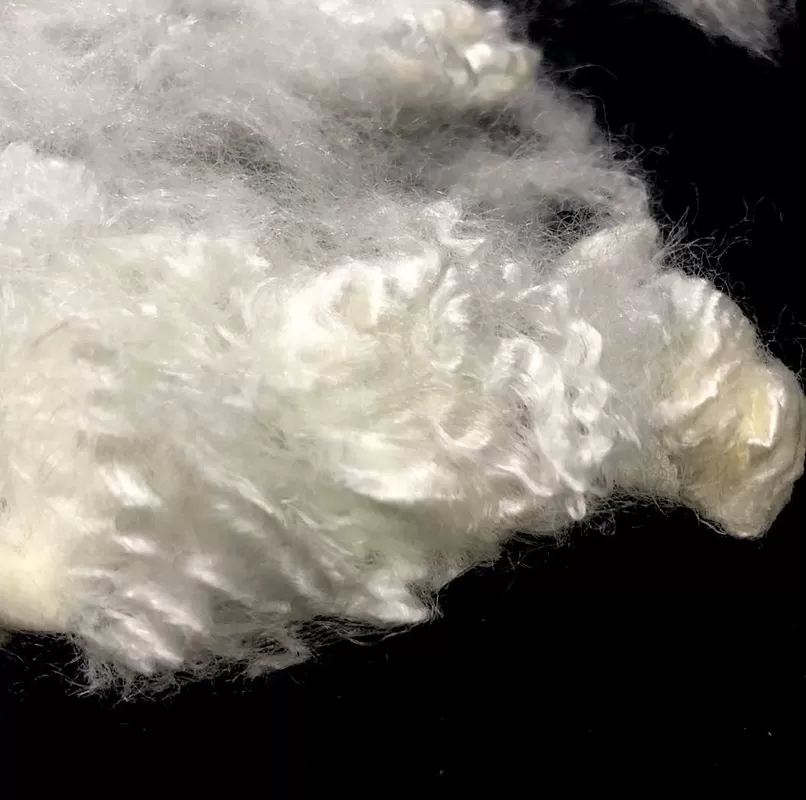- This topic is empty.
-
AuthorPosts
-
28/10/2025 at 13:45 #4122
In recent years, the textile industry has witnessed a significant shift toward sustainable and high-performance fibers. Among these innovations, acrylic natural fibers are emerging as a versatile solution that balances durability, comfort, and eco-conscious production. By combining the advantages of traditional acrylic with natural, renewable sources, these fibers meet growing demands for environmentally responsible, functional, and high-quality textiles.
SuZhou Makeit Technology Co., Ltd is at the forefront of this movement, developing polyester staple fibers, viscose fibers, PLA fibers, and soybean protein fibers that cater to modern market requirements, blending sustainability with high-performance standards.
1. Sustainability in the Textile Industry
-
Environmental Impact of Traditional Fibers: Conventional synthetic fibers like pure acrylic or polyester are derived from petrochemicals, contributing to carbon emissions and non-degradable waste.
-
Bio-Based Alternatives: Makeit focuses on fibers produced from renewable biomass resources, including PLA (polylactic acid), PBS, and soybean protein fibers, gradually replacing fossil-based materials.
-
Reduced Carbon Footprint: Using bio-derived acrylic natural fibers reduces dependence on non-renewable resources, aligning with global sustainability trends in textiles.
2. Composition and Properties of Acrylic Natural Fibers
-
Hybrid Composition: Acrylic natural fibers often blend acrylic polymers with plant-based or biodegradable components, resulting in enhanced softness, resilience, and thermal regulation.
-
Performance Attributes:
-
Moisture Management: Improved breathability and moisture-wicking properties make fabrics comfortable for various applications.
-
Durability and Elasticity: Retains shape after repeated washing and mechanical stress.
-
Color Retention: Enhanced dye affinity allows for vibrant, long-lasting colors.
Eco-Certifications: Many acrylic natural fibers meet standards like OEKO-TEX® and GRS, confirming non-toxicity and environmental compliance.

3. Applications Across the Textile Spectrum
-
Apparel: Sweaters, outerwear, and activewear benefit from soft, insulating, and lightweight fibers.
-
Home Textiles: Upholstery, blankets, and rugs leverage durable, colorfast, and low-maintenance fibers.
-
Industrial Uses: Non-woven fabrics and composites employ acrylic natural fibers for thermal insulation, filtration, and lightweight reinforcement.
4. Advantages Over Conventional Acrylic Fibers
-
Enhanced Comfort: Natural components increase softness and skin-friendliness, making fabrics more suitable for everyday wear.
-
Eco-Friendly Lifecycle: Fibers are biodegradable or partially renewable, reducing landfill impact and microplastic pollution.
-
Versatile Processing: Compatible with spinning, weaving, knitting, and non-woven manufacturing, facilitating adoption in existing production lines.
-
Thermal Regulation: Maintains warmth in cooler climates and breathability in warm environments.
5. Industry Trends Driving Adoption
-
Consumer Awareness: Growing demand for sustainable fashion and eco-friendly home textiles is driving innovation.
-
Integration with Smart Textiles: Acrylic natural fibers are increasingly used in functional fabrics, including moisture-wicking, thermal-regulating, and flame-retardant applications.
-
Collaborations with Fashion Brands: Leading manufacturers partner with apparel brands seeking sustainable alternatives without compromising quality or aesthetics.
-
Government and Regulatory Support: Incentives for green textiles and biodegradable materials encourage large-scale adoption.
6. Production and Quality Assurance at Makeit
-
Advanced Manufacturing: Makeit uses precision-controlled fiber extrusion, blending, and cutting techniques to ensure uniformity and quality.
-
Testing & Certification: Fibers undergo SDS-PAGE, MS, and HPLC analyses to validate performance and purity.
-
R&D Focus: Continuous development of PLA blends, viscose hybrids, and protein-based fibers supports evolving market requirements.
-
Scalable Production: Facilities can meet bulk industrial orders while maintaining strict quality standards.
7. Future Prospects and Innovation
-
Fully Biodegradable Fiber Lines: Research focuses on enhancing mechanical properties while maintaining complete biodegradability.
-
Functional Additives: Incorporation of UV protection, antibacterial agents, or conductive elements expands fiber functionality.
-
Circular Economy Integration: Potential to recycle textile waste back into fiber production, minimizing environmental footprint.
-
Global Market Expansion: With growing demand in Europe, North America, and Asia, acrylic natural fibers are poised for rapid adoption in high-end and mass-market segments.
8. Practical Considerations for Manufacturers and Designers
-
Compatibility with Existing Equipment: Acrylic natural fibers are designed to work with standard spinning, weaving, and knitting machinery.
-
Cost-Benefit Analysis: Slightly higher raw material costs are offset by long-term environmental compliance, brand positioning, and consumer appeal.
-
Blend Ratios: Adjusting acrylic-to-natural content tailors properties for comfort, strength, and sustainability objectives.
-
End-Use Planning: Understanding the application environment (clothing, home textiles, or industrial) ensures optimal fiber selection.
Conclusion
Acrylic natural fibers represent a new era in textile innovation, balancing sustainability, performance, and versatility. By integrating bio-based components into traditional acrylic fibers, manufacturers like Makeit deliver solutions that meet modern consumer expectations, industrial requirements, and environmental standards.
As the global textile industry moves toward eco-conscious practices, acrylic natural fibers are set to become a cornerstone material for fashion, home textiles, and technical applications, offering durability, comfort, and reduced environmental impact.
http://www.makeitfiber.com
SuZhou Makeit Technology Co.,Ltd -
-
AuthorPosts
- You must be logged in to reply to this topic.